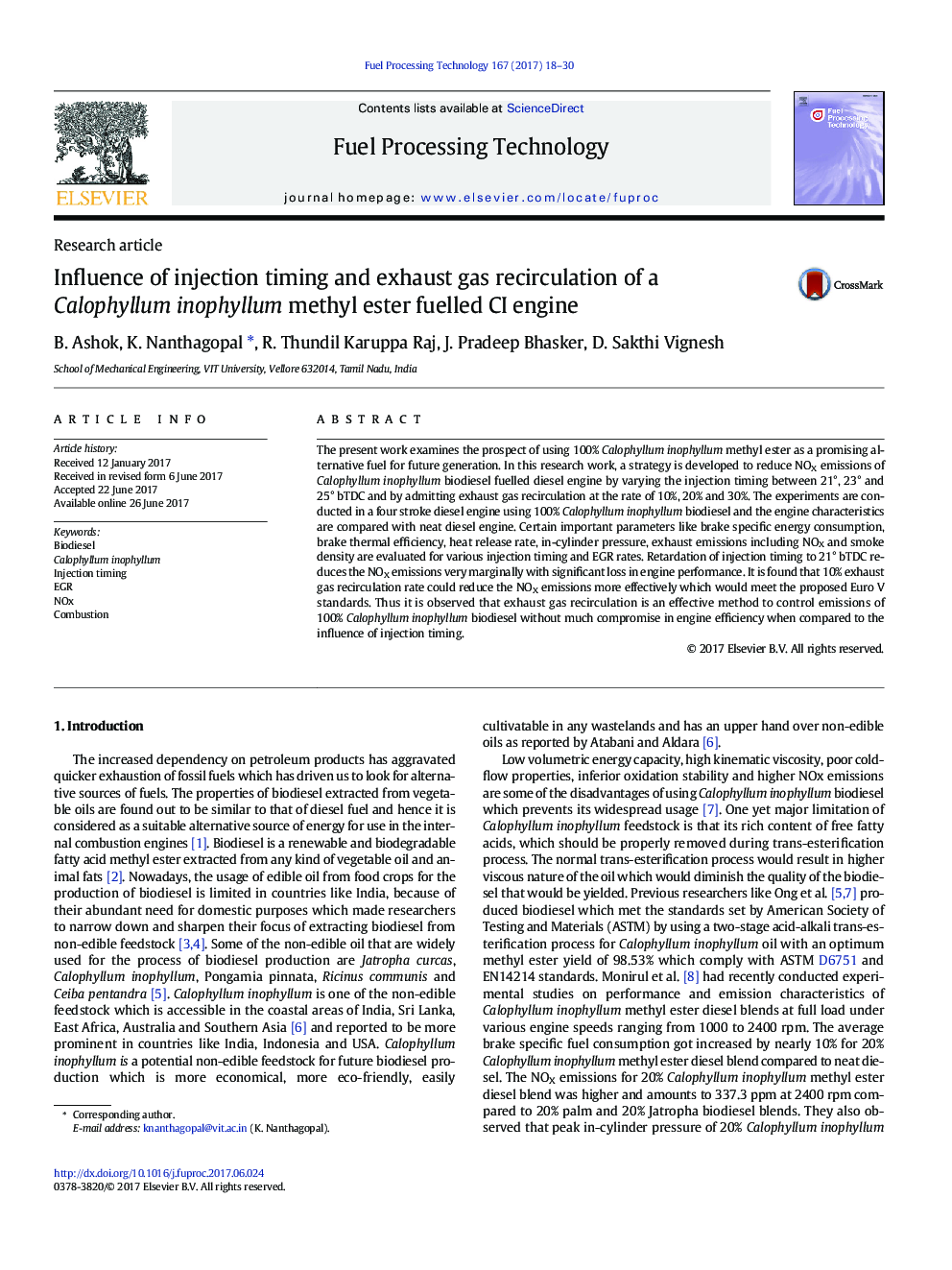| Article ID | Journal | Published Year | Pages | File Type |
|---|---|---|---|---|
| 6476221 | Fuel Processing Technology | 2017 | 13 Pages |
â¢Effect of exhaust gas recirculation on Calophyllum inophyllum biodiesel is studied.â¢10% of exhaust gas recirculation meets the Euro V standards for neat biodiesel.â¢Injection timing has less impact on emissions compared to exhaust gas recirculation.â¢Implementation of 100% Calophyllum inophyllum biodiesel is investigated.
The present work examines the prospect of using 100% Calophyllum inophyllum methyl ester as a promising alternative fuel for future generation. In this research work, a strategy is developed to reduce NOX emissions of Calophyllum inophyllum biodiesel fuelled diesel engine by varying the injection timing between 21°, 23° and 25° bTDC and by admitting exhaust gas recirculation at the rate of 10%, 20% and 30%. The experiments are conducted in a four stroke diesel engine using 100% Calophyllum inophyllum biodiesel and the engine characteristics are compared with neat diesel engine. Certain important parameters like brake specific energy consumption, brake thermal efficiency, heat release rate, in-cylinder pressure, exhaust emissions including NOX and smoke density are evaluated for various injection timing and EGR rates. Retardation of injection timing to 21° bTDC reduces the NOX emissions very marginally with significant loss in engine performance. It is found that 10% exhaust gas recirculation rate could reduce the NOX emissions more effectively which would meet the proposed Euro V standards. Thus it is observed that exhaust gas recirculation is an effective method to control emissions of 100% Calophyllum inophyllum biodiesel without much compromise in engine efficiency when compared to the influence of injection timing.
Graphical abstractDownload high-res image (235KB)Download full-size image
